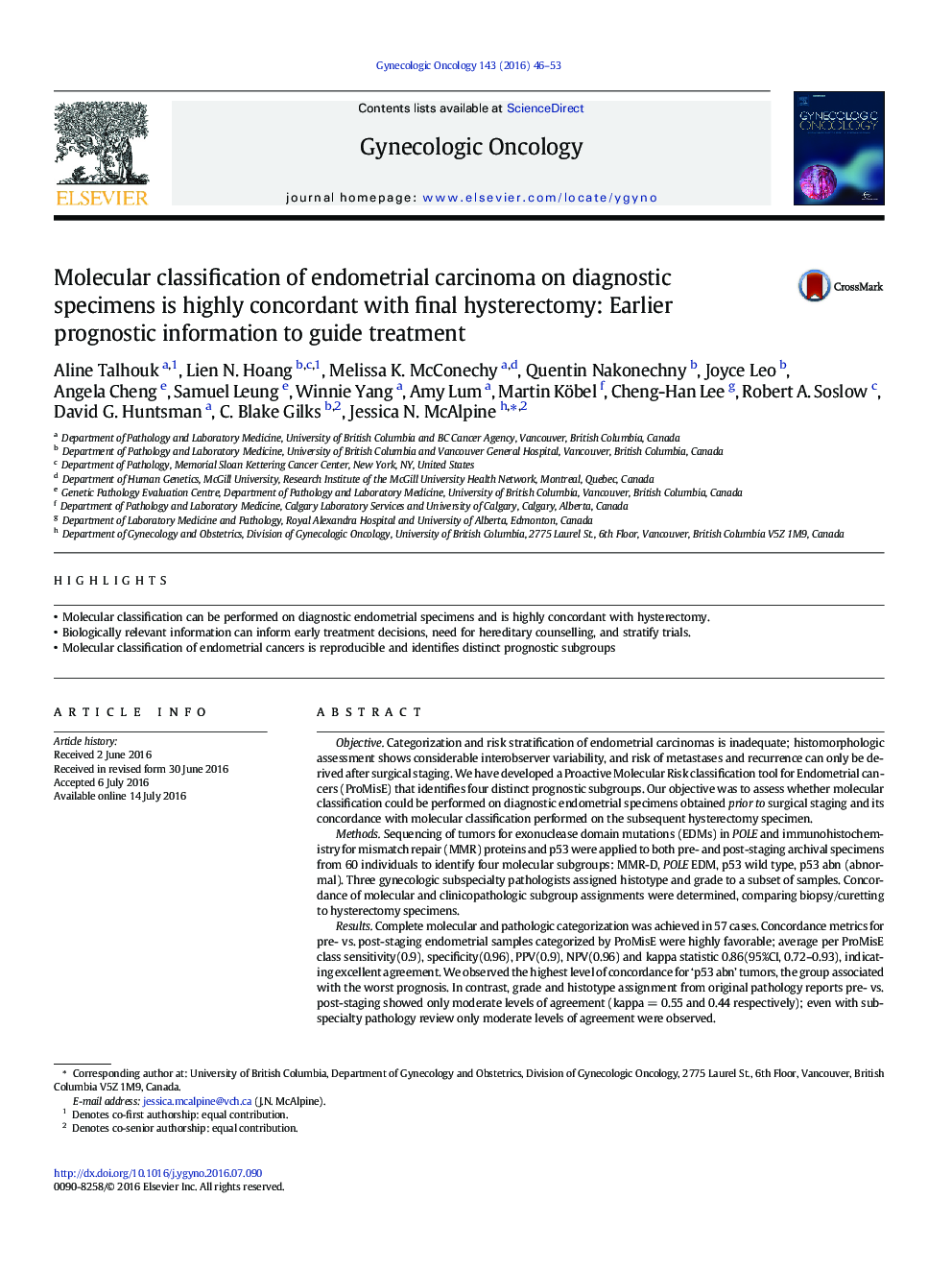| کد مقاله | کد نشریه | سال انتشار | مقاله انگلیسی | نسخه تمام متن |
|---|---|---|---|---|
| 3942406 | 1410079 | 2016 | 8 صفحه PDF | دانلود رایگان |
• Molecular classification can be performed on diagnostic endometrial specimens and is highly concordant with hysterectomy.
• Biologically relevant information can inform early treatment decisions, need for hereditary counselling, and stratify trials.
• Molecular classification of endometrial cancers is reproducible and identifies distinct prognostic subgroups
ObjectiveCategorization and risk stratification of endometrial carcinomas is inadequate; histomorphologic assessment shows considerable interobserver variability, and risk of metastases and recurrence can only be derived after surgical staging. We have developed a Proactive Molecular Risk classification tool for Endometrial cancers (ProMisE) that identifies four distinct prognostic subgroups. Our objective was to assess whether molecular classification could be performed on diagnostic endometrial specimens obtained prior to surgical staging and its concordance with molecular classification performed on the subsequent hysterectomy specimen.MethodsSequencing of tumors for exonuclease domain mutations (EDMs) in POLE and immunohistochemistry for mismatch repair (MMR) proteins and p53 were applied to both pre- and post-staging archival specimens from 60 individuals to identify four molecular subgroups: MMR-D, POLE EDM, p53 wild type, p53 abn (abnormal). Three gynecologic subspecialty pathologists assigned histotype and grade to a subset of samples. Concordance of molecular and clinicopathologic subgroup assignments were determined, comparing biopsy/curetting to hysterectomy specimens.ResultsComplete molecular and pathologic categorization was achieved in 57 cases. Concordance metrics for pre- vs. post-staging endometrial samples categorized by ProMisE were highly favorable; average per ProMisE class sensitivity(0.9), specificity(0.96), PPV(0.9), NPV(0.96) and kappa statistic 0.86(95%CI, 0.72–0.93), indicating excellent agreement. We observed the highest level of concordance for ‘p53 abn’ tumors, the group associated with the worst prognosis. In contrast, grade and histotype assignment from original pathology reports pre- vs. post-staging showed only moderate levels of agreement (kappa = 0.55 and 0.44 respectively); even with subspecialty pathology review only moderate levels of agreement were observed.ConclusionMolecular classification can be achieved on diagnostic endometrial samples and accurately predicts the molecular features in the final hysterectomy specimens, demonstrating concordance superior to grade and histotype. This biologically relevant information, available at initial diagnosis, has the potential to inform management (surgery, adjuvant therapy) from the earliest time point in cancer care.
Journal: Gynecologic Oncology - Volume 143, Issue 1, October 2016, Pages 46–53
